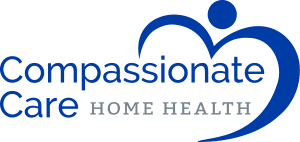Have you ever slipped, tripped or fallen in your home or at work? It is a common occurrence for all adults to stumble every so often, but it is more prevalent and serious for those 55 and older. The injuries due to a slip, trip or fall can limit one’s ability to lead an independent life. And for those over 65, the risk of death due to a fall is 4 times greater than other age groups.
Did you know?
- Approximately 8.6 million visits to the emergency department are the result of a fall
- Falls account for approximately 16.9% of all workplace accidents
- Nearly 25% of all injuries incurred in the home are a result of a fall
- 10% of all injuries are caused by slips, trips and falls
- Falls cause 15% of all accidental deaths, second only to motor vehicles (according to OSHA)
Injuries and deaths from falls do not have to happen. There is a misconception among the general public that there are some accidents that just cannot be prevented. Most safety professionals agree that although some accidents are more difficult to anticipate and therefore more difficult to prevent than others, in theory there is no such thing as a non-preventable accident.
To prevent slips, trips and falls, consider these 3 tips:
- Understand how “slip and fall” accidents happen. Statistics show that 40% of all falls are from height, while 60% of falls happen on the same level due to slips and trips. Slips happen when there is not enough friction or traction between the footwear and the walking surface. Common causes of slips are wet or oily surfaces, occasional spills, weather hazards, loose rugs or mats, and flooring that does not have the same degree of traction in all areas. Trips happen when your foot hits an object causing you to lose your balance. Common causes of trips are obstructed view, poor lighting, clutter, wrinkled carpet, uncovered cables, uneven walking surfaces and the like.
- Identify trouble areas and eliminate or minimize the hazards in your environment. Good housekeeping is the first and the most important step to prevent falls due to slips and trips. When looking throughout your home or office to identify potential hazards, consider taking the following steps:
- Mark spills or wet areas to warn others and then clean immediately
- Mop or sweep debris from the floor
- Remove obstacles from walkways and always keep them free of clutter
- Secure mats, rugs and carpets to the floor
- Cover cables that cross walkways
- Keep working areas and walkways well lighted
- Adjust your personal habits to be safer through your daily routine.
- Select proper footwear. Footwear that is properly fitting and prevents fatigue which, in turn, improves safety.
- Take your time and pay attention to where you are going. When you are distracted by texting or talking on the phone, it is easy to lose track of what’s in front of you.
- Adjust your stride to a pace suitable for the walking surface and the tasks you are doing.
- Make wide turns at corners to prevent running into other people or objects.
- Use a flashlight if you enter a dark room where there is no light.
- Maintain 3 points of contact on stairs or ramps by using a handrail.
- Exercise regularly to maintain strength, flexibility and balance.
